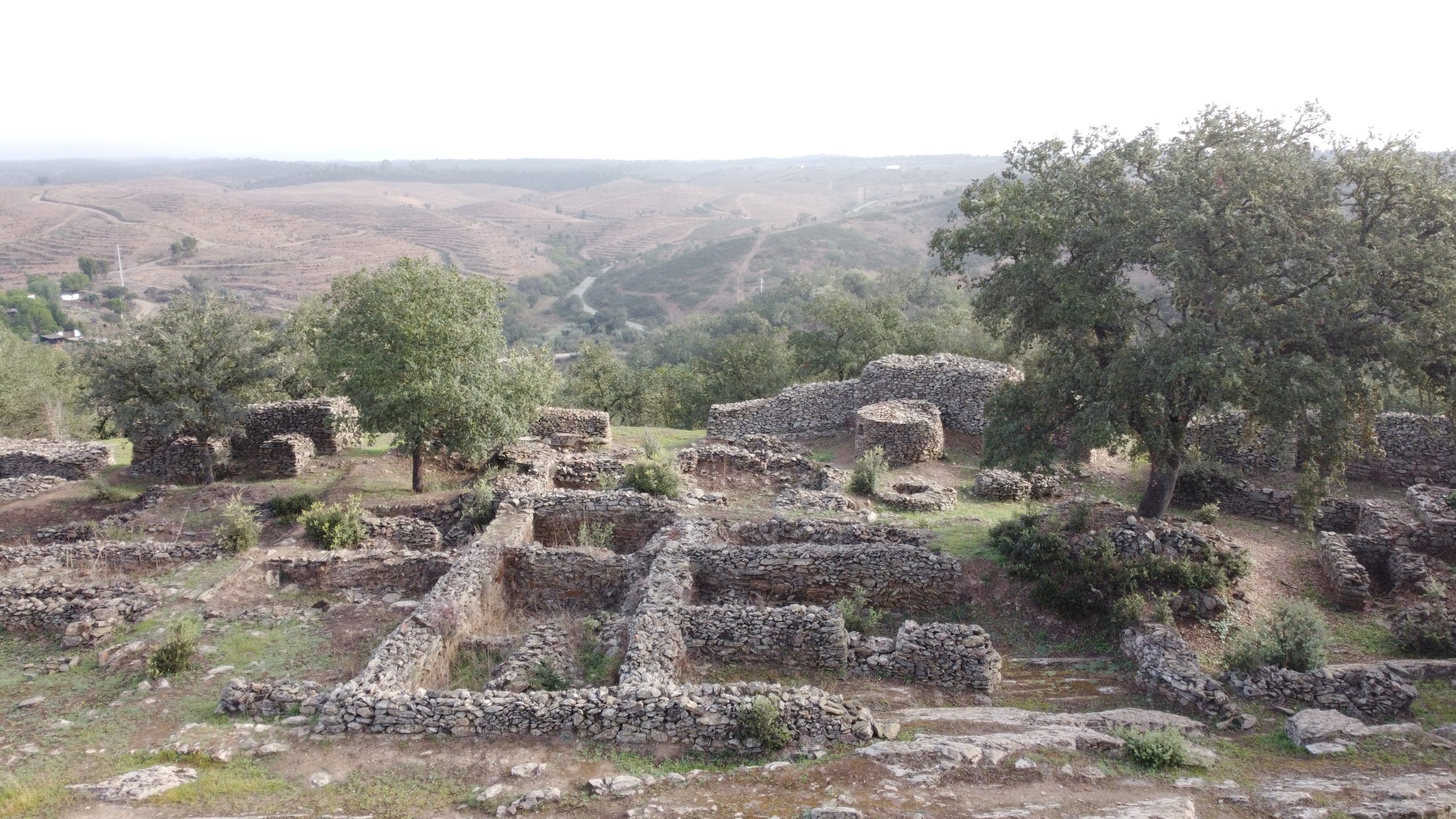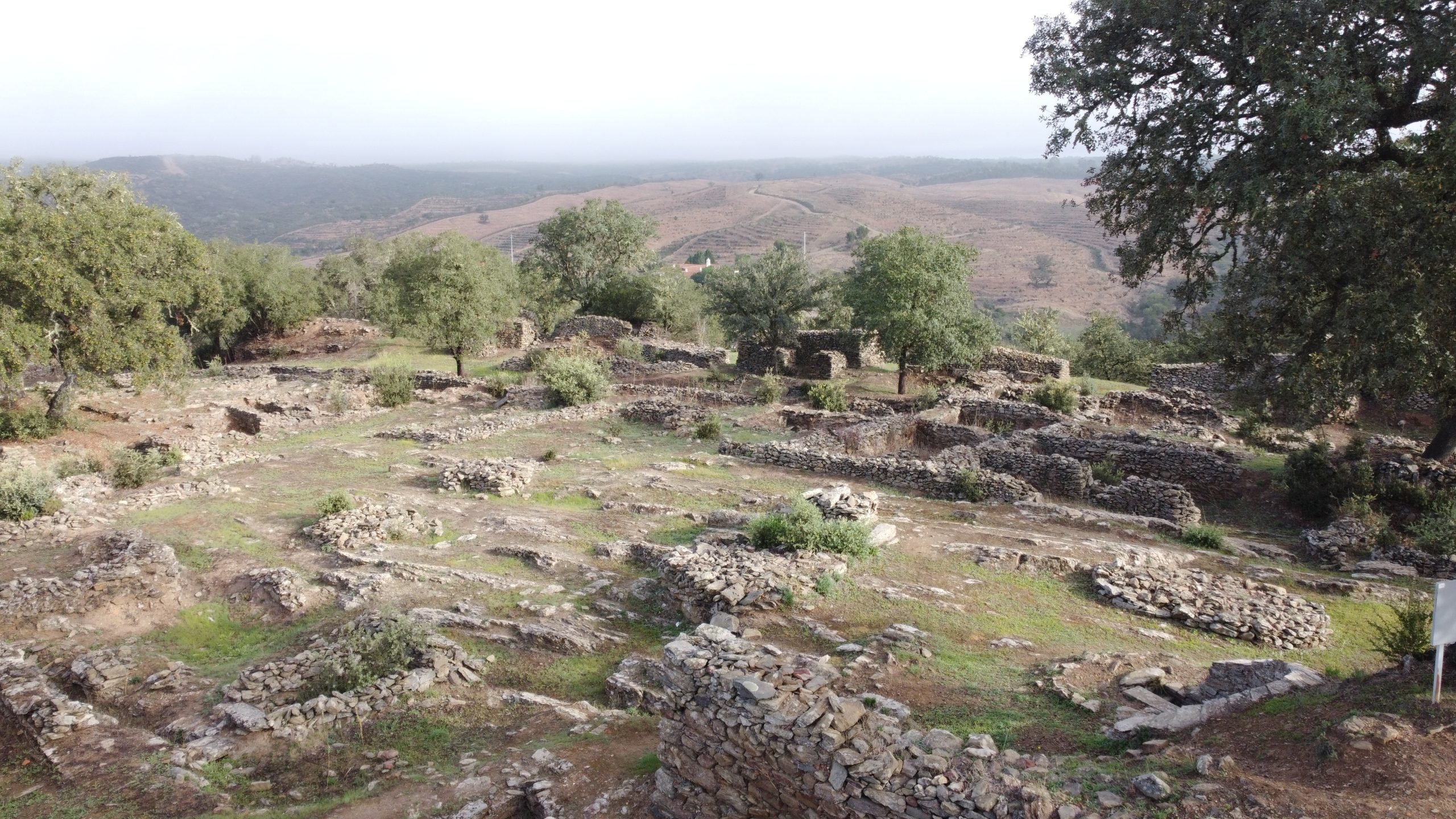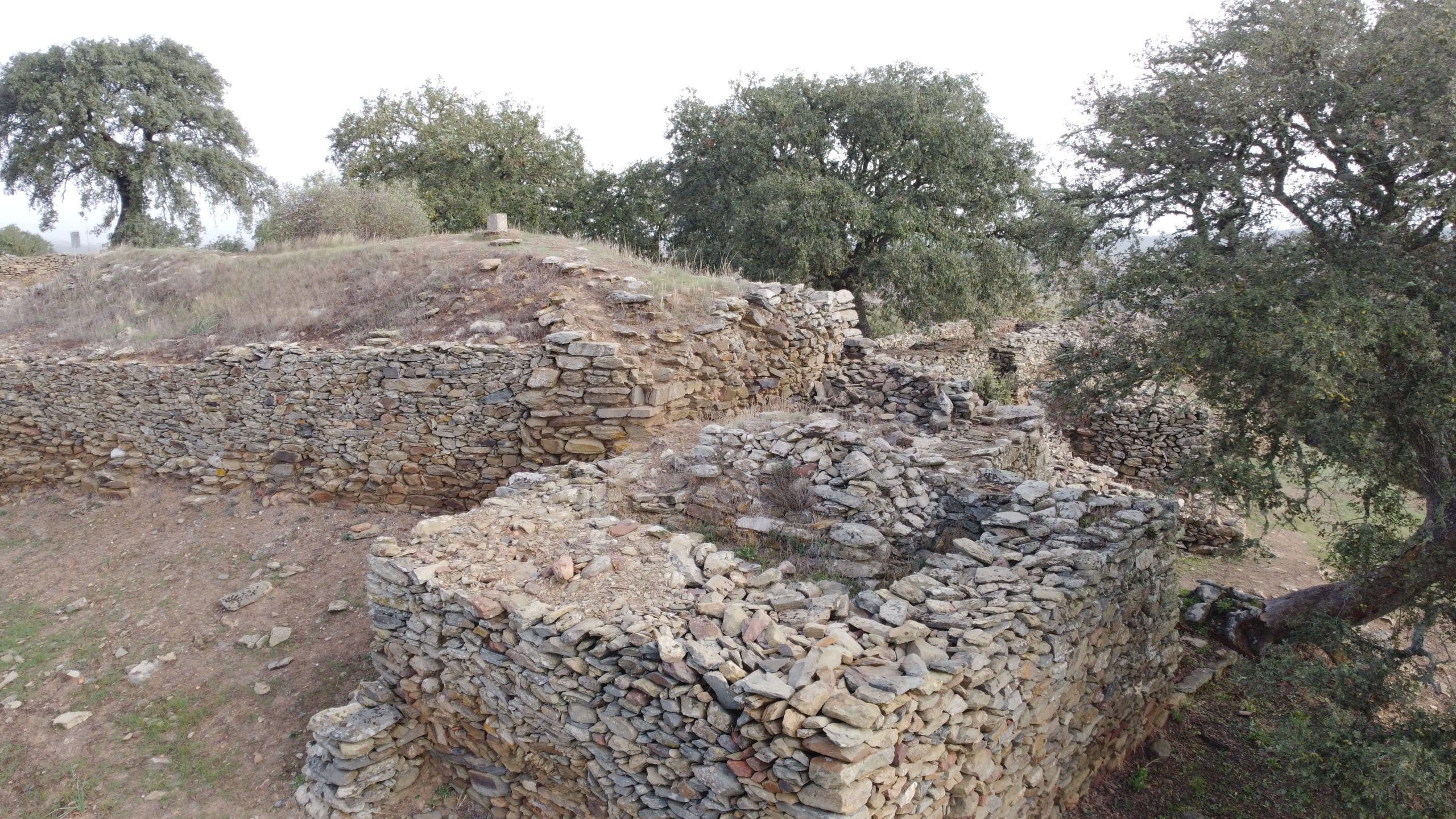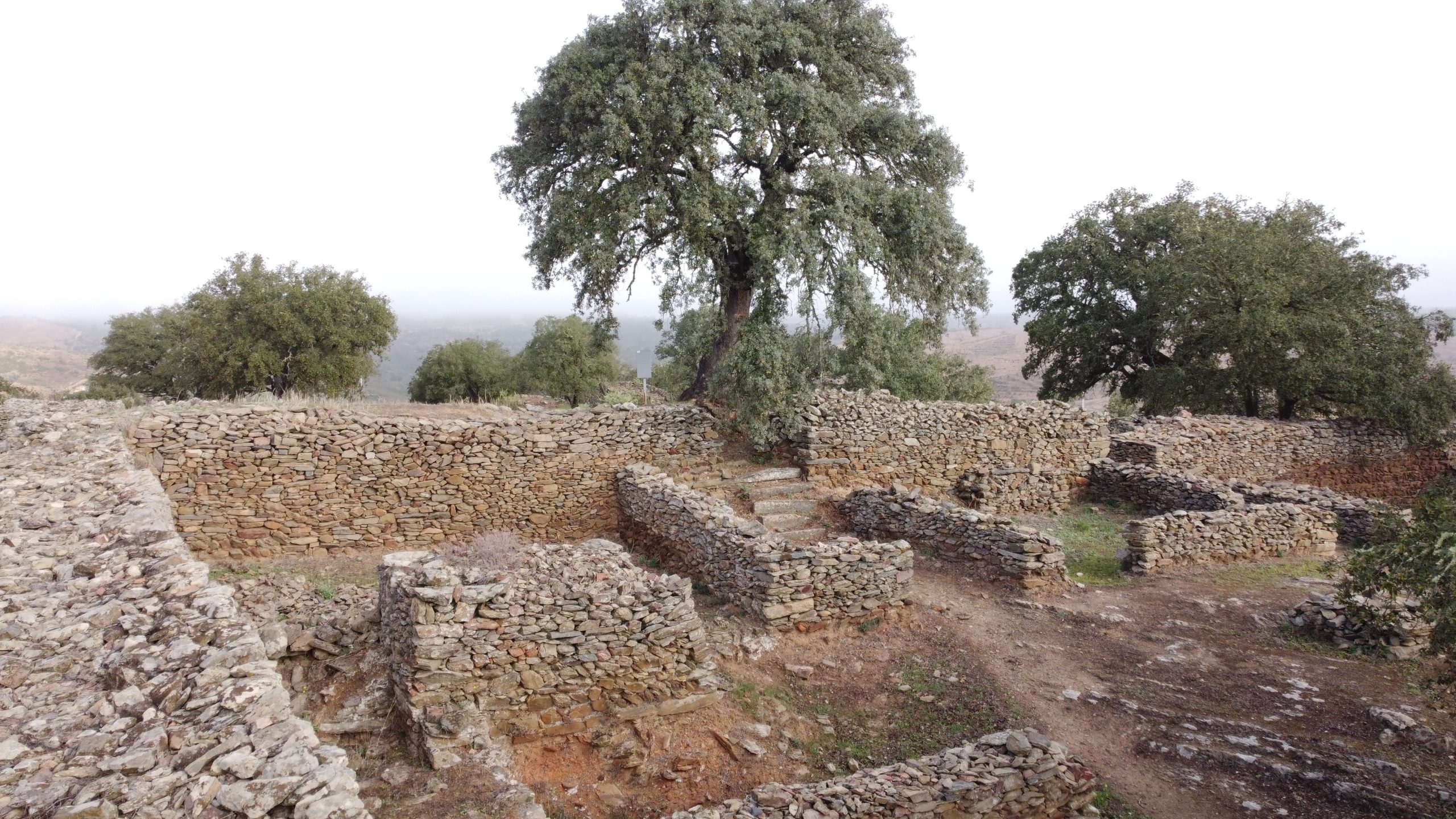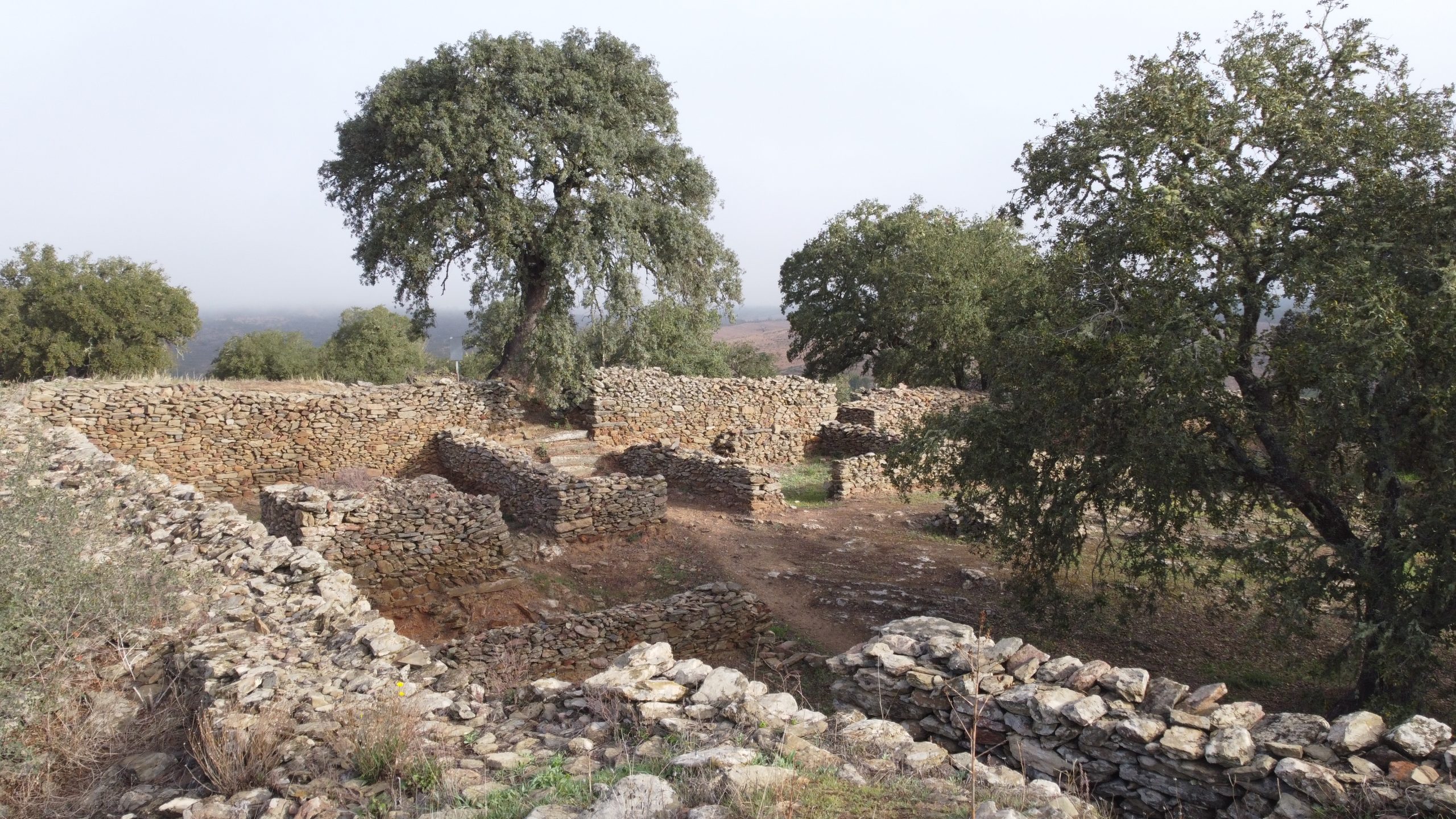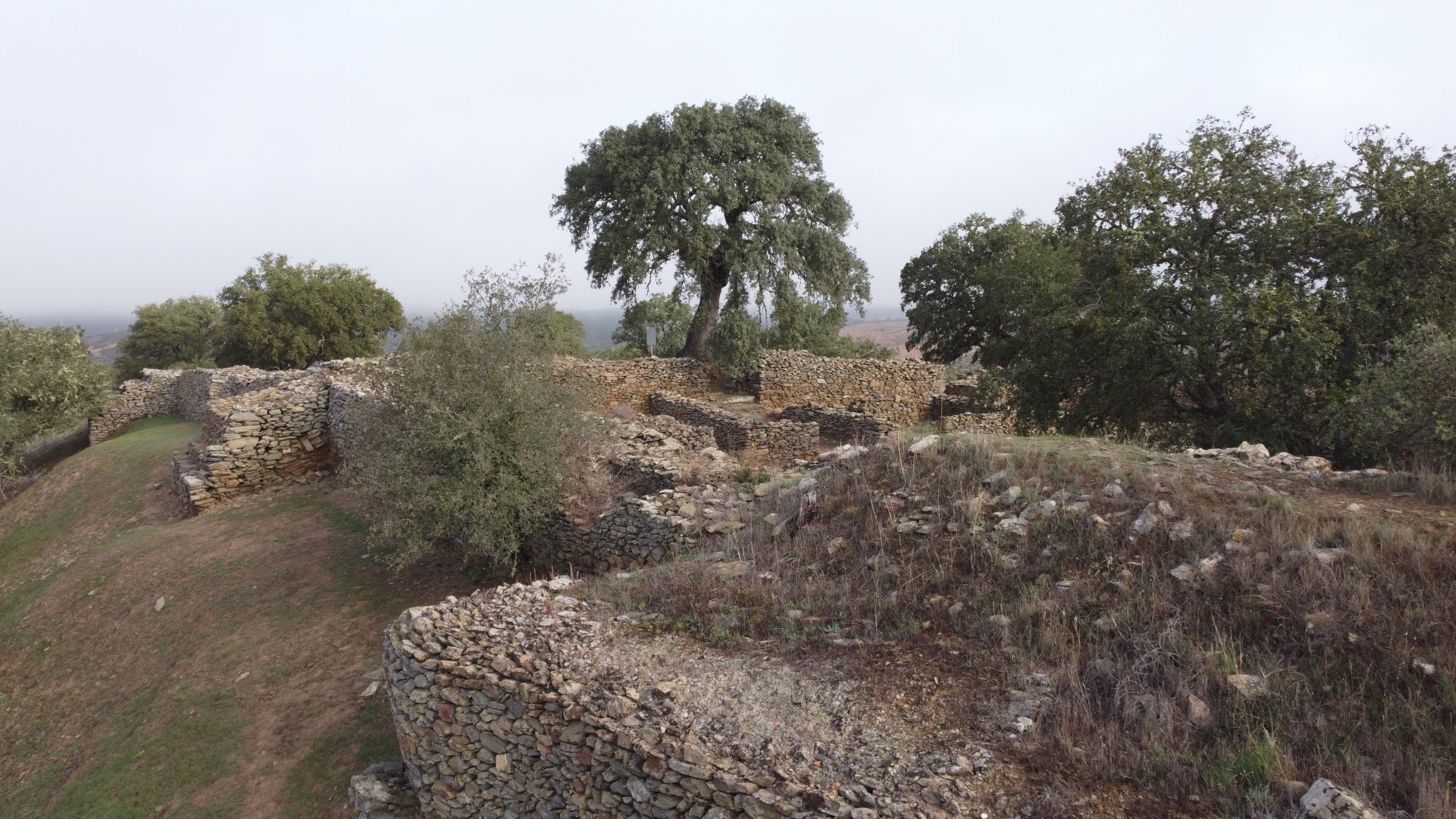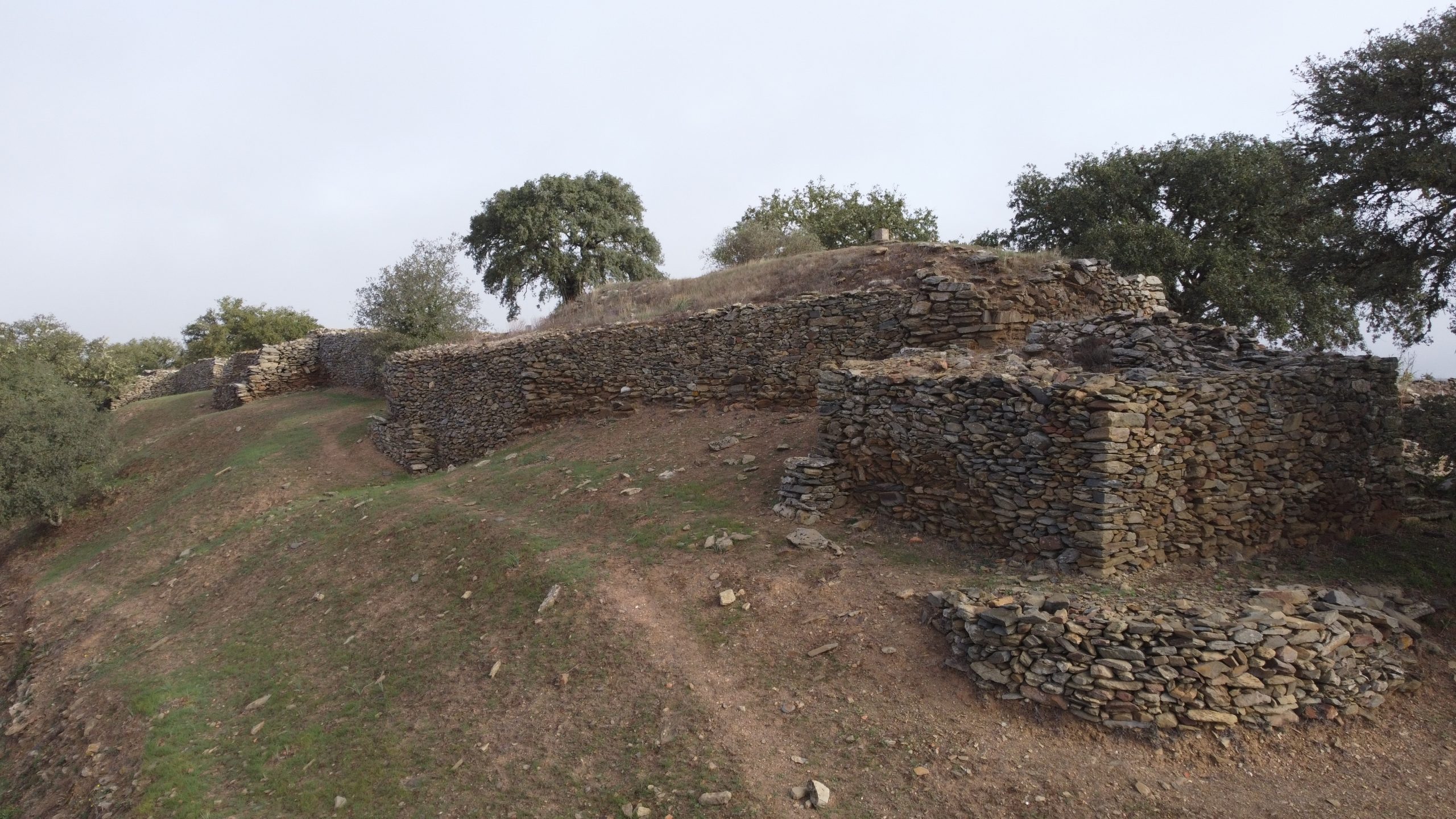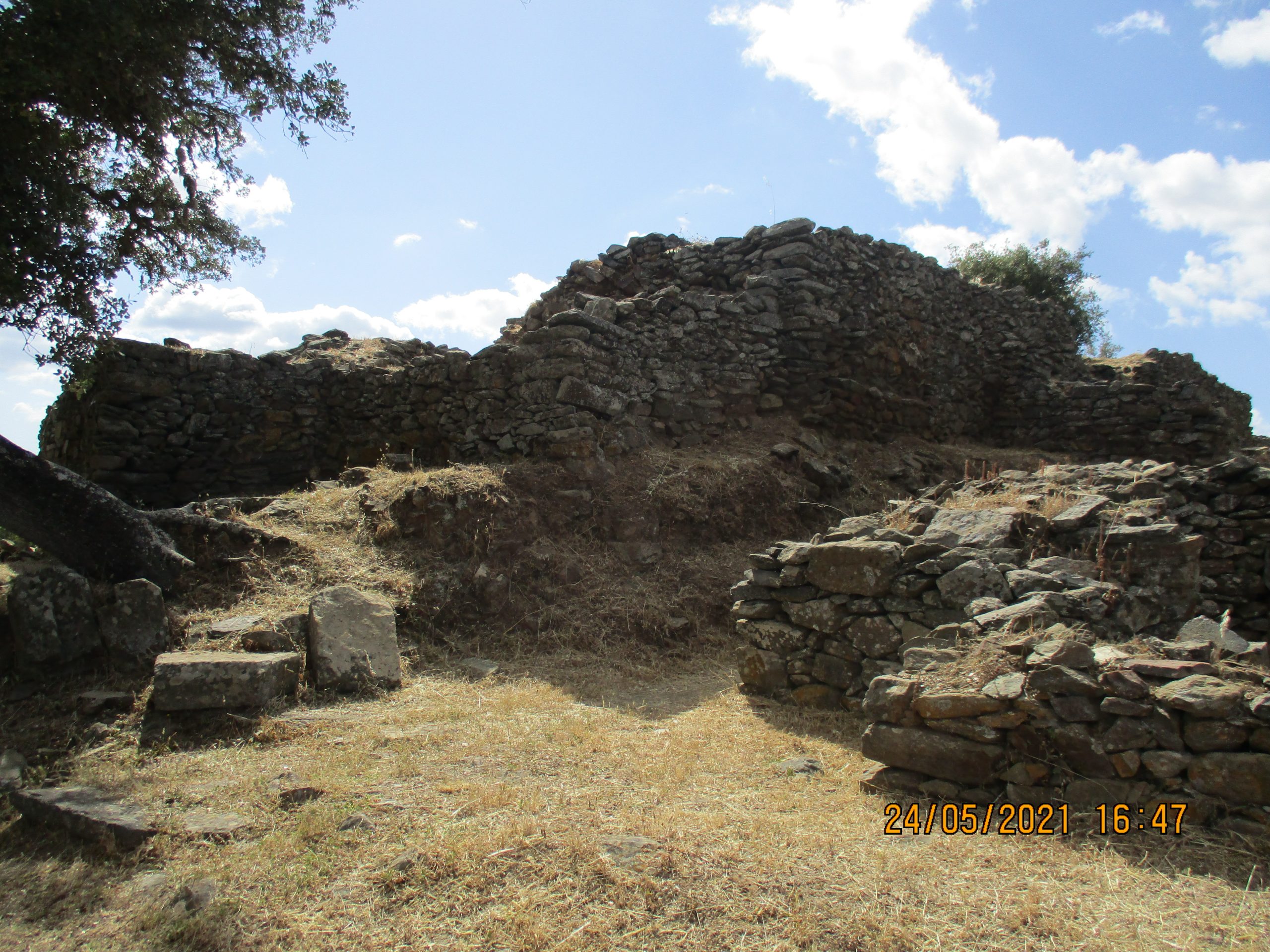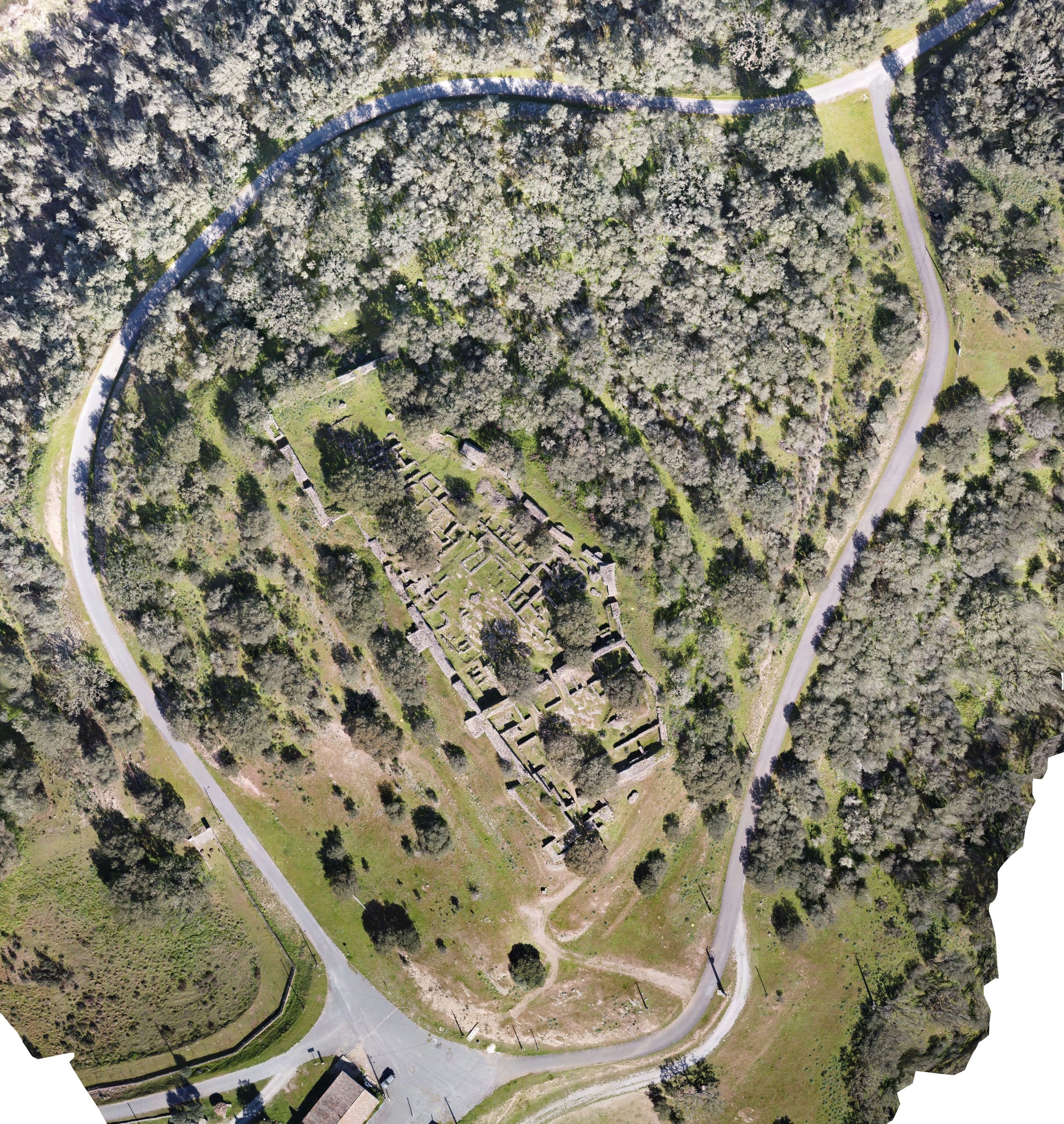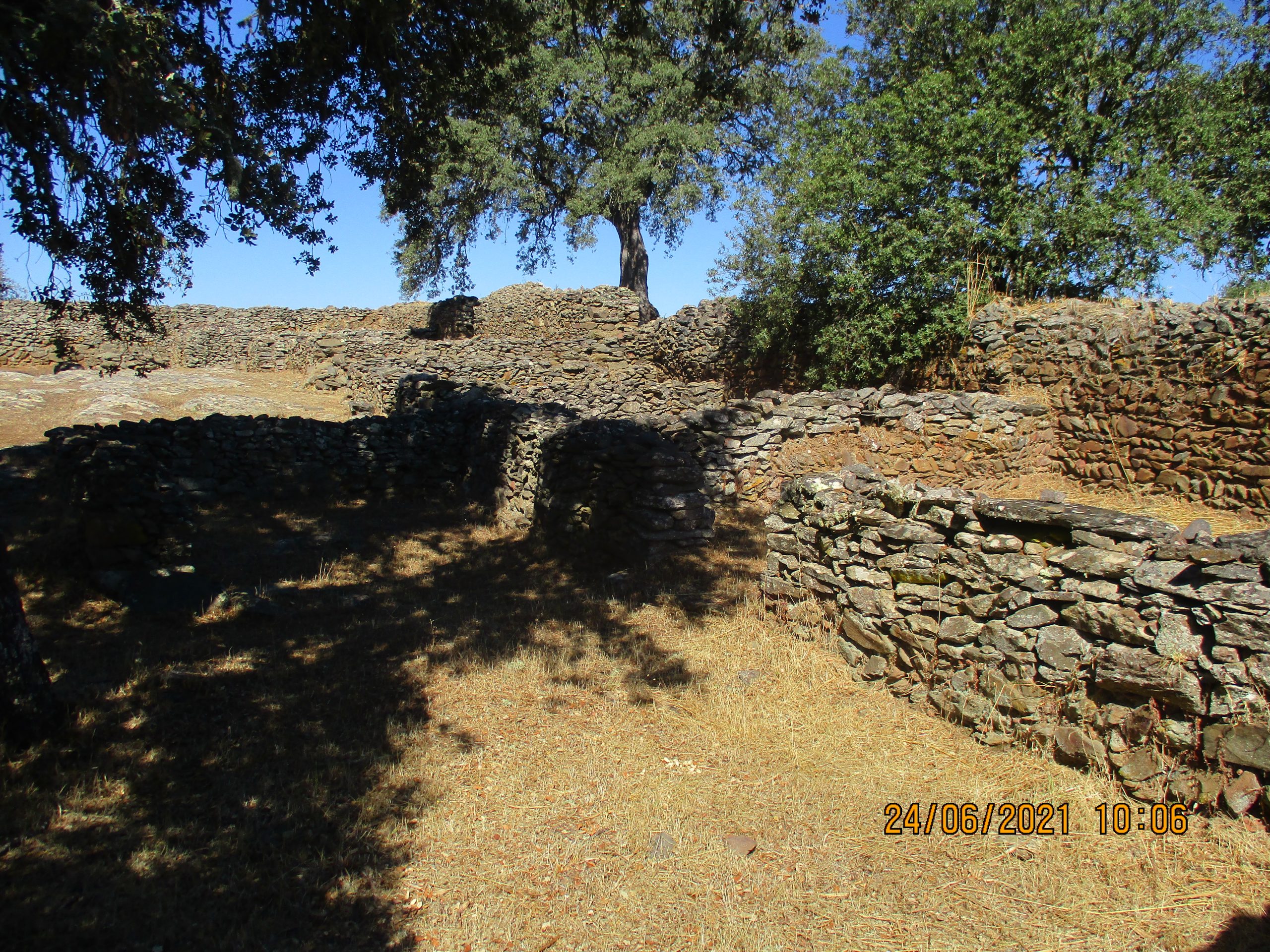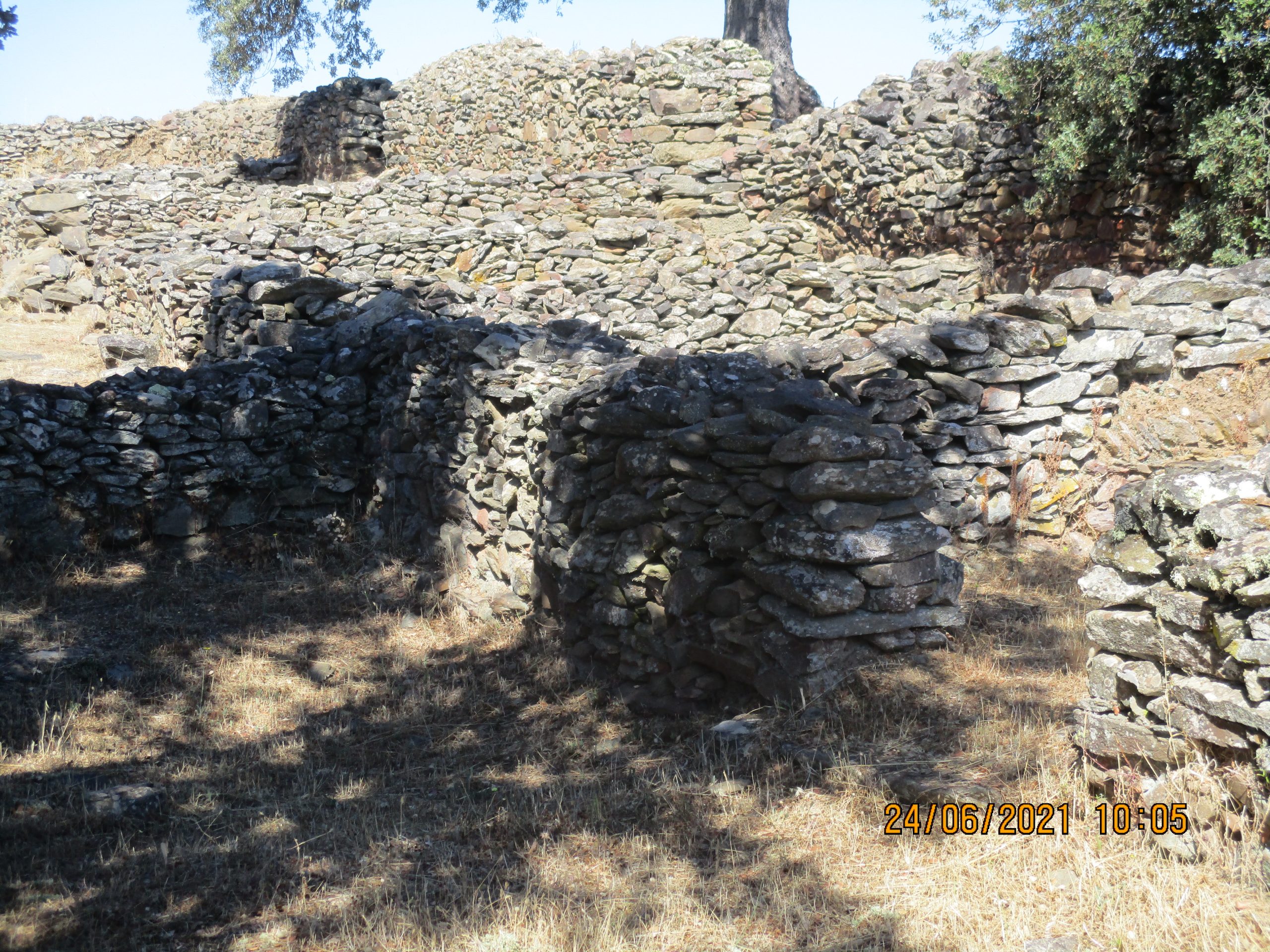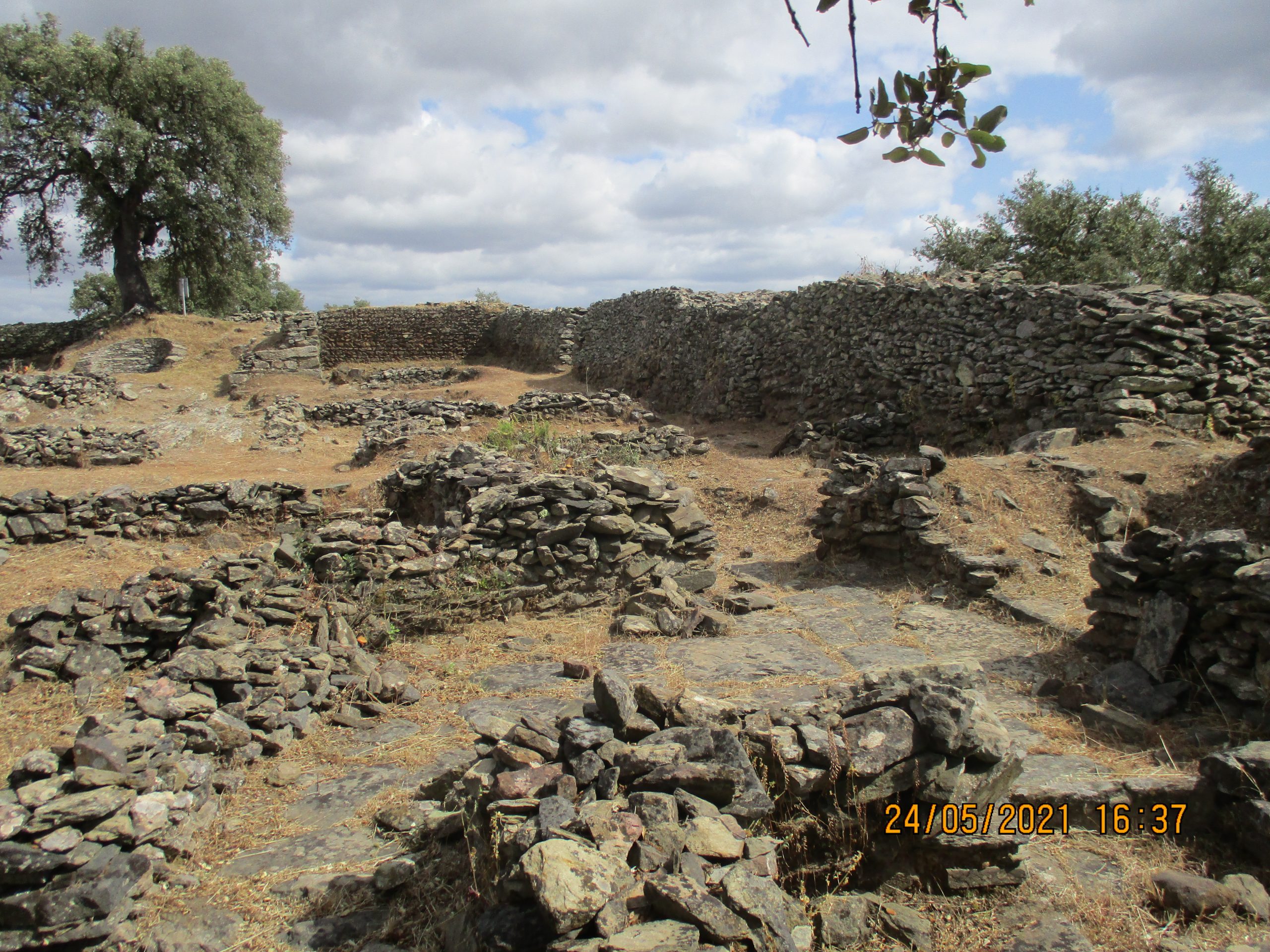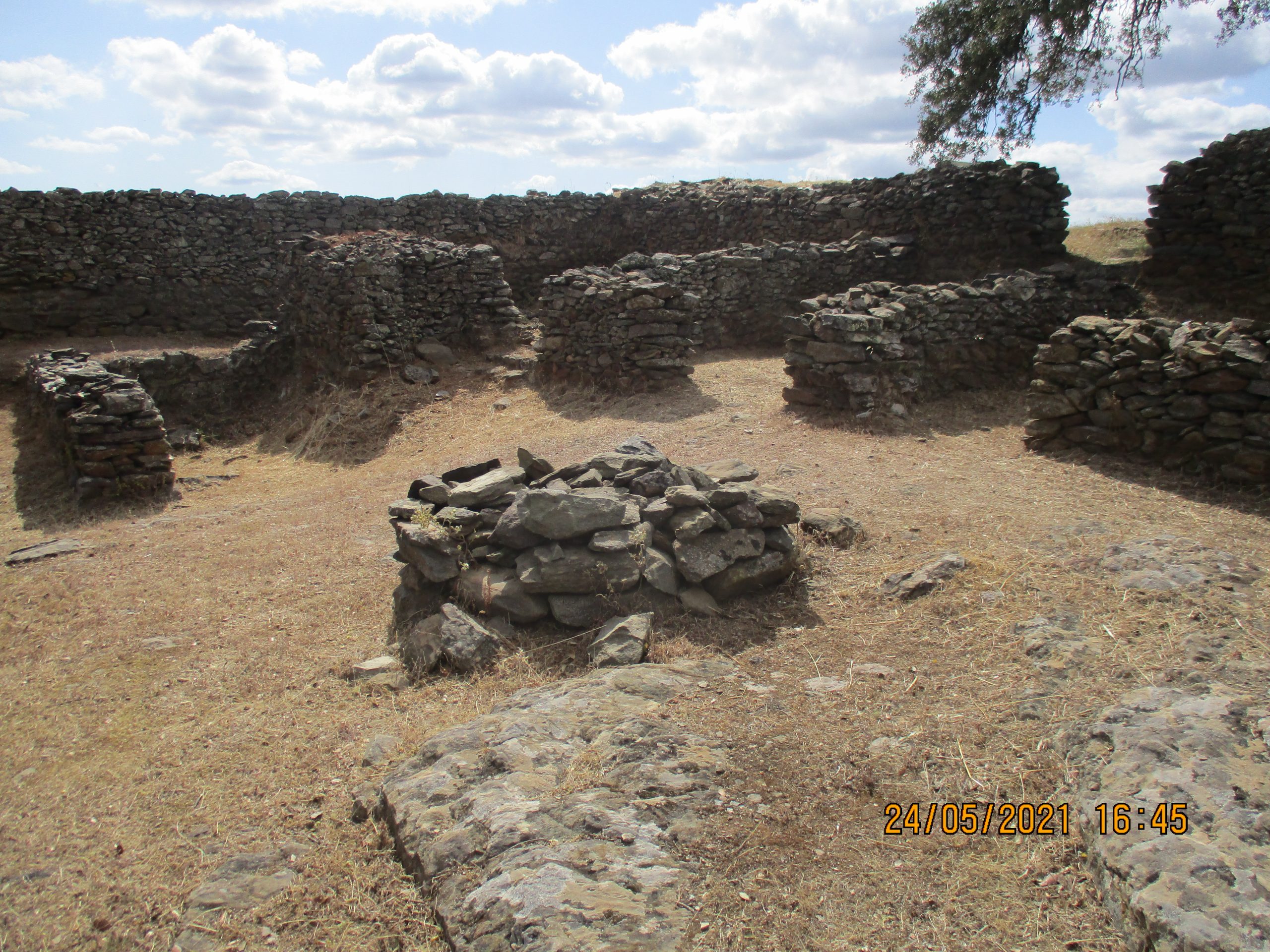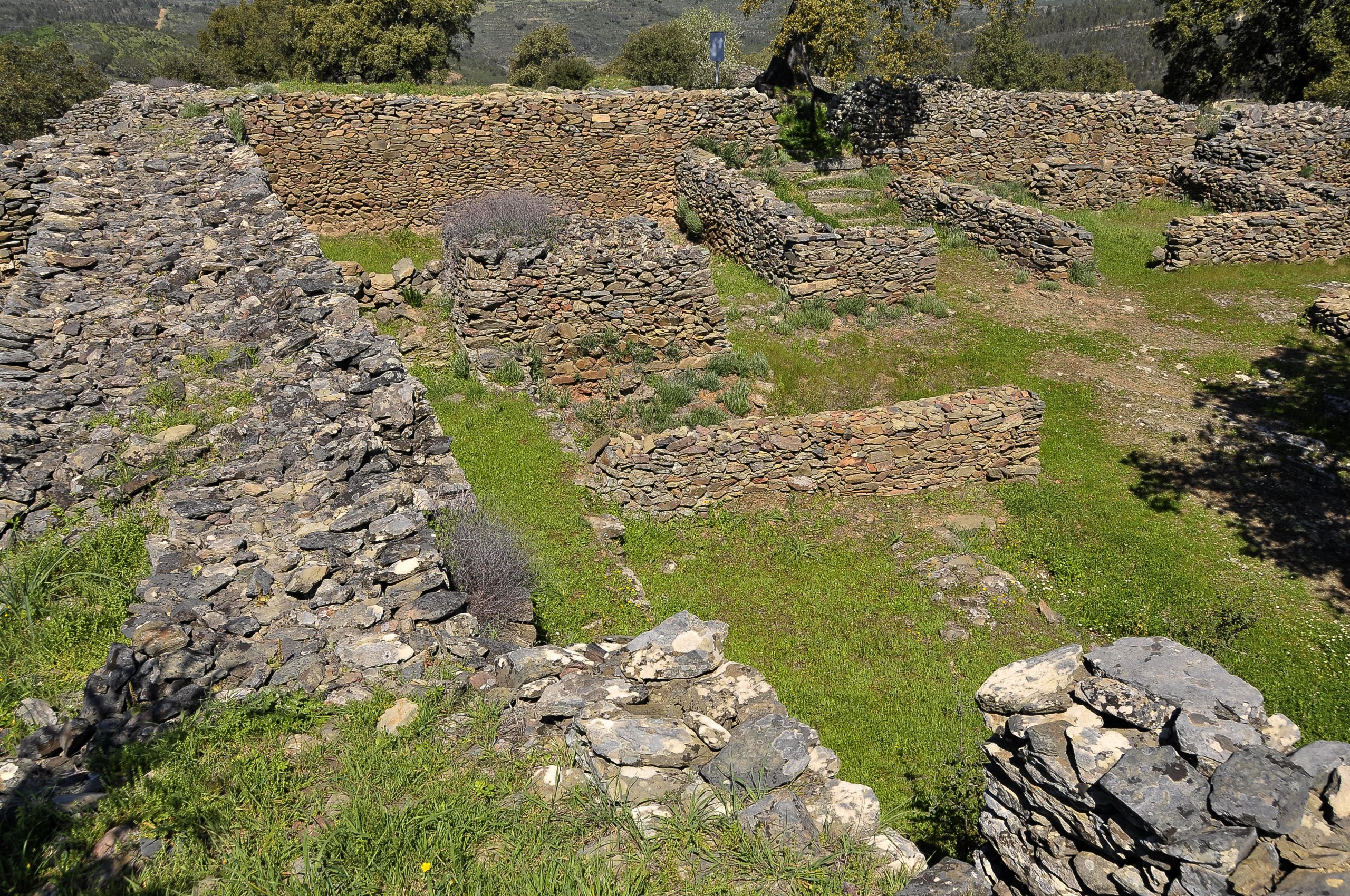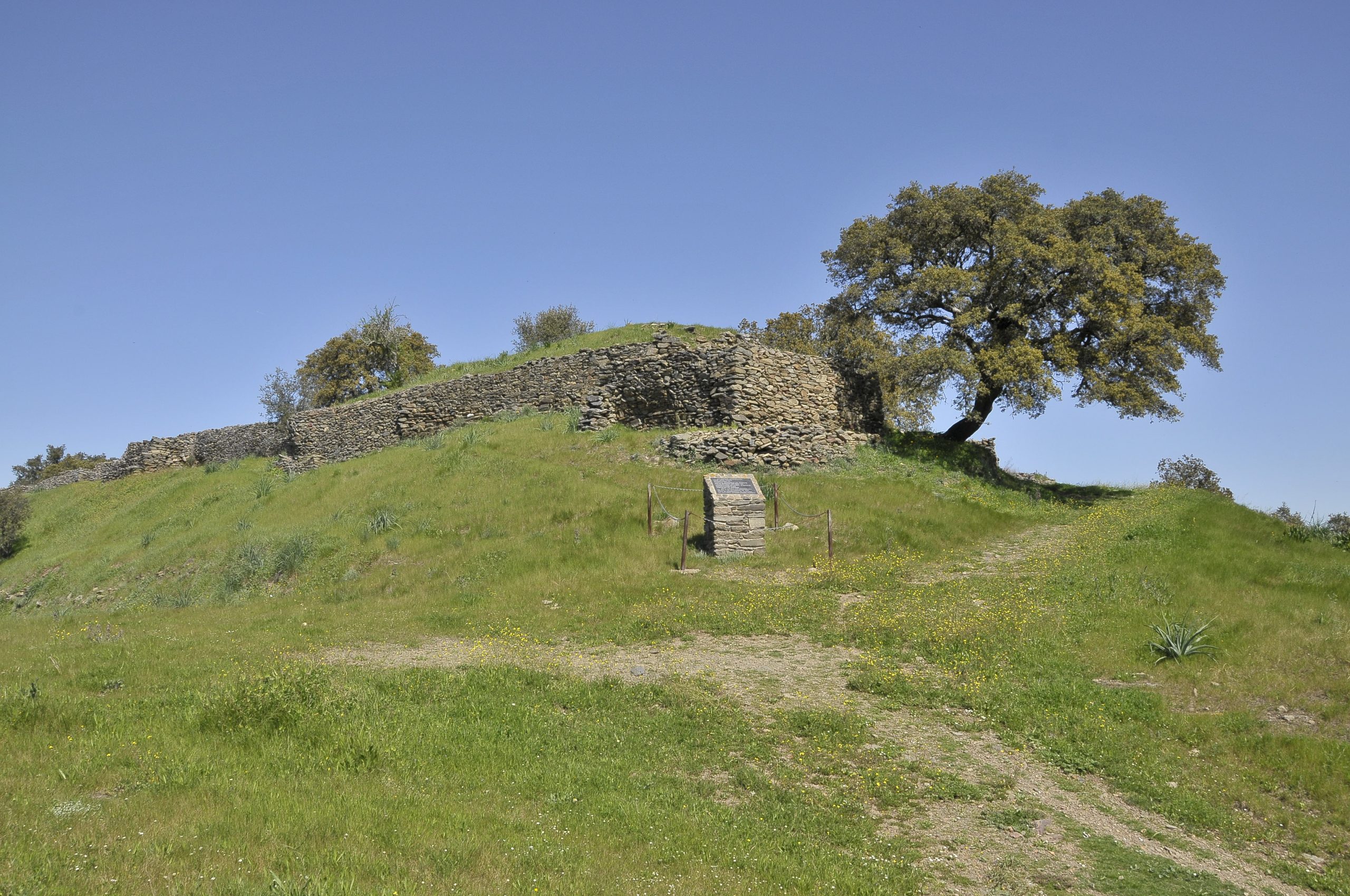Archaeological Circuit of Castro da Cola, Ourique
Castro da Cola
37º34'44.41"N / 8º18'2.10"O
Free access
Reception and Interpretation Centre
Visits to this centre are free.
It closes on Tuesdays and Wednesdays, January 1, Easter Sunday, and December 25.
Summer (May 1 to September 15) – 9.30 a.m.-12.30 p.m. / 3 p.m.-6.30 p.m.
Winter (September 16 to April 30) – 9.30 a.m.-12.30 p.m. / 2 p.m. -5.30 p.m.
About
Castro da Cola
Castro da Cola was designated a National Monument in 1910. This fortified settlement was occupied from the Bronze Age to the Late Middle Ages. It quite likely corresponds to the settlement of Marachique, mentioned in Islamic sources and Christian medieval documents until the 13th century. It was probably abandoned in the 14th century.
It is located on a hill overlooking Ribeira de Marchicão, near the Mira River, and the Church of Nossa Senhora da Cola is nearby. The defensive structure of Castro da Cola has an irregular polygonal plan, with an approximate perimeter of 330 meters, reinforced by several square towers.
The entrance is located to the SE of the compound, near an elbow entrance and a large tower from which only its foundations remain. Next, there is a large courtyard, possibly the centre of “Qal’a” (fortress) – a name that would lead to the toponym “Cola” – the location of the military support structures (warehouses, horse stables, etc.).
From this courtyard, through a relatively narrow entrance, which is now boarded up, people entered the urban area of Castro da Cola, which was wider and organised around two streets: one running parallel to the wall, to the North, and a central one. There was a long square in the Southern area. There are several buildings in this urban nucleus, surrounding a central courtyard, warehouses, stores, workshops, wells, and a cistern.
Access
Prepare your visit
The archaeological circuit has a Reception and Interpretation Centre near the Church of Nossa Senhora da Cola. It can be visited by people with reduced mobility (wheelchairs, baby strollers).
For more information, contact
colaassociacao@gmail.com / cacmb.ourique@gmail.com
Jorge Silva – 963090894
Reduced mobility
The archaeological site of Castro da Cola is not accessible to people with reduced mobility (wheelchairs, baby strollers), and guided tours are not available.
Children should always be accompanied by a responsible adult.
Cautionary Note
Access to this archaeological site is facilitated by the owner of the land where it is located. Keep that in mind when you visit the site, respecting it and contributing to its cleanliness, maintenance, and preservation.
Support

RESEARCH
Bibliography & useful links
CATARINO, Helena (1995-1997). Arqueologia do período islâmico em Portugal. O Arqueólogo Português, Série IV, 13/15, pp. 457-484. Disponível em: Consultar Artigo Completo → [Consultado a 05/06/2023].
CORREIA, Susana; ALFENIM, Rafael (2001). Circuito Arqueológico da Cola. In Património / Estudos, n.º 1, Instituto Português do Património Arquitetónico, Lisboa, pp. 53-54.
CORREIA, Virgílio Hipólito (1999). Algumas considerações sobre os centros de poder na Proto-História do Sul de Portugal. In Revista de Guimarães, Volume especial – Actas do Congresso de Proto-História Europeia, Sociedade Martins Sarmento, Guimarães, pp. 699-714. Disponível em: Consultar Artigo Completo → [Consultado a 02/06/2023].
CORREIA, Virgílio Hipólito; PARREIRA, Rui (2002). Roteiros da Arqueologia Portuguesa, 8 – Cola. Circuito Arqueológico. Instituto Português do Património Arquitectónico (IPPAR), Lisboa, pp. 62-65.
GÓMEZ MARTÍNEZ, Susana (1998). As cerâmicas de verde e manganés do Castro da Cola (Ourique). In Actas das 2ªs Jornadas de Cerâmica Medieval e Pós-Medieval. Métodos e resultados para o seu estudo, Câmara Municipal de Tondela, Tondela, pp. 57-65. Disponível em: Consultar Artigo Completo → [Consultado em 05/06/2023].
MACIAS, Santiago (2005). Mértola: O último porto do Mediterrâneo. Catálogo da exposição Mértola – história e património: séculos V-XIII, vol. I. Campo Arqueológico de Mértola, Mértola, pp. 177-181.
RAPOSO, Jorge (2001). Sítios arqueológicos visitáveis em Portugal. In Almadan. 2ª série: 10, Almada, pp. 100-157. Disponível em: Consultar Artigo Completo → [Consultado a 22 de março de 2023].
TORRES, Cláudio; MACIAS, Santiago (1998). O Legado Islâmico em Portugal, Círculo de Leitores, Lisboa, pp. 170-171.
VILHENA, J. (2006). O Sentido da Permanência. As Envolventes do Castro da Cola nos 2º e 1º Milénios a.C.. Tese de Mestrado apresentada à Faculdade de Letras da Universidade de Lisboa.
https://www.patrimoniocultural.gov.pt/pt/patrimonio/itinerarios/alentejo-algarve/02/
https://arqueologia.patrimoniocultural.pt/index.php?sid=sitios&subsid=47703
http://monumentos.pt/Site/APP_PagesUser/SIPA.aspx?id=6438
https://islamicart.museumwnf.org/database_item.php?id=monument;ISL;pt;Mon01;30;pt
http://patrimonioislamico.ulusofona.pt/detalhe.php?id=646
http://www.cm-ourique.pt/pt/menu/322/circuito-arqueologico-da-cola.aspx


